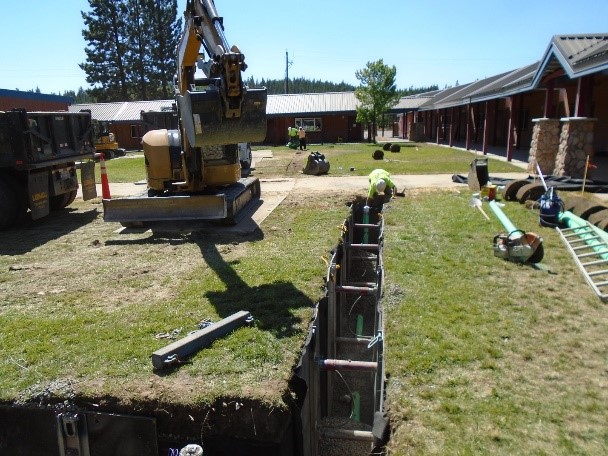Awards

NCE’s Innovative Approach Saves School and Receives APWA Recognition
NCE received the 2017 Public Works Project of the Year Award for the C. Roy Carmen Elementary School Hydrogen Sulfide Mitigation Project from the APWA’s Sacramento chapter. The school, located in Portola, California, had experienced intermittent hydrogen sulfide odors for several years, causing concerns among teacher, parents, and students. The Plumas Unified School District retained NCE in mid-April to identify the source and develop a solution. Otherwise, a new school would have to be constructed at an alternate site at a cost of approximately $38 million.
Through soil gas sampling and testing, indoor air monitoring, and site mapping, NCE concluded that the hydrogen sulfide gas originated from anaerobic decomposition of native organics beneath the school that were inundated with transient groundwater. This transient groundwater would infiltrate into the storm drain system, which acted as a conduit to carry hydrogen sulfide gas to the atmosphere. In addition, the gas was venting through the slab into the interior of the multi-purpose building.
The District, NCE, and a highly qualified contractor implemented a modified design- build delivery method to accelerate the construction schedule and resolve the issues in time for the new school year. The design included replacement of key portions of the existing storm drain system to eliminate groundwater infiltration, strategic installation of a french-drain system to cut off and remove groundwater from inundating the source area, plumbing of existing roof downspouts into the storm drain to divert flows away from the source area, and the installation of an impermeable membrane coating on the existing floor of the multi-purpose building to prevent gas intrusion through the concrete floor slab.